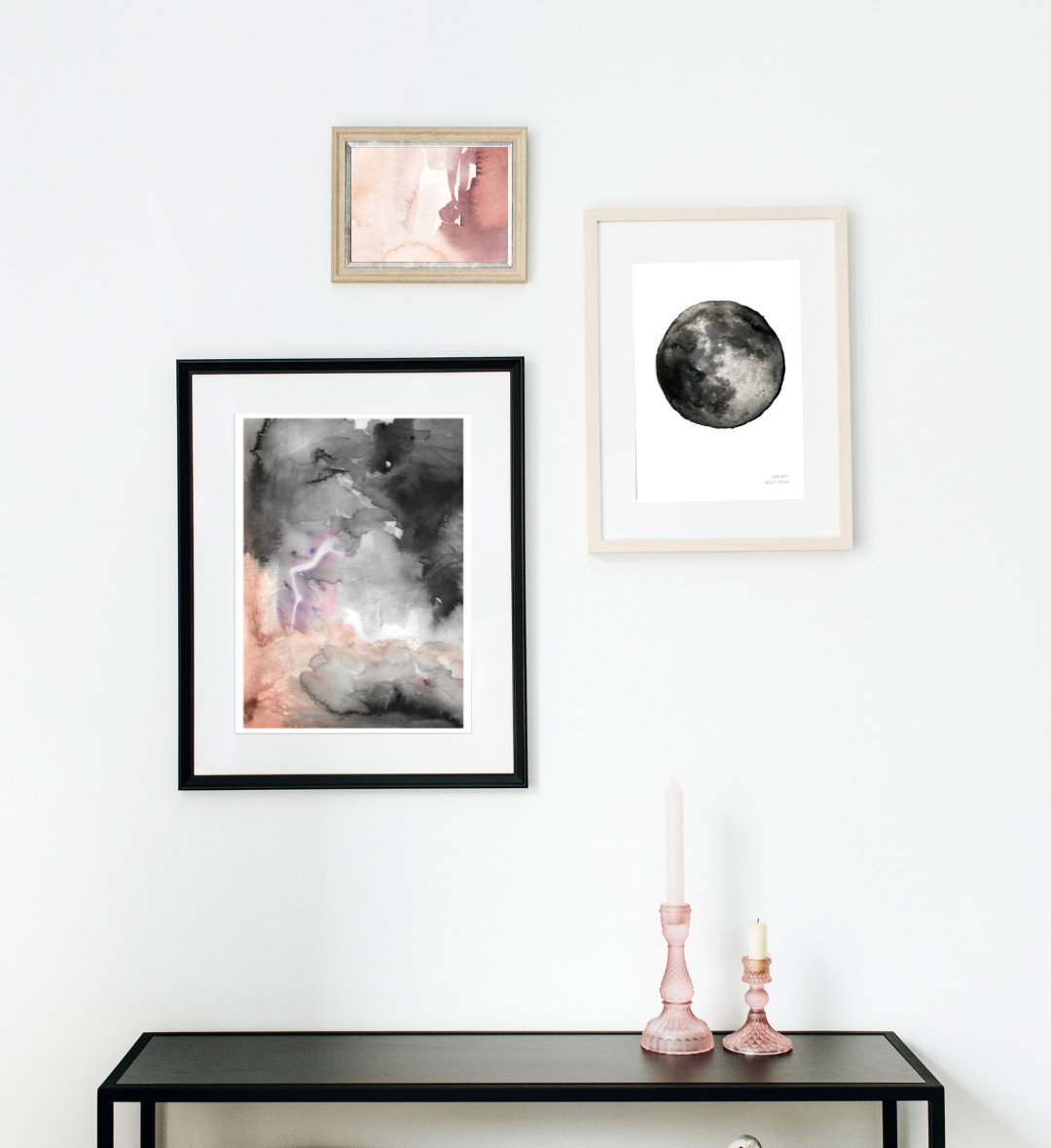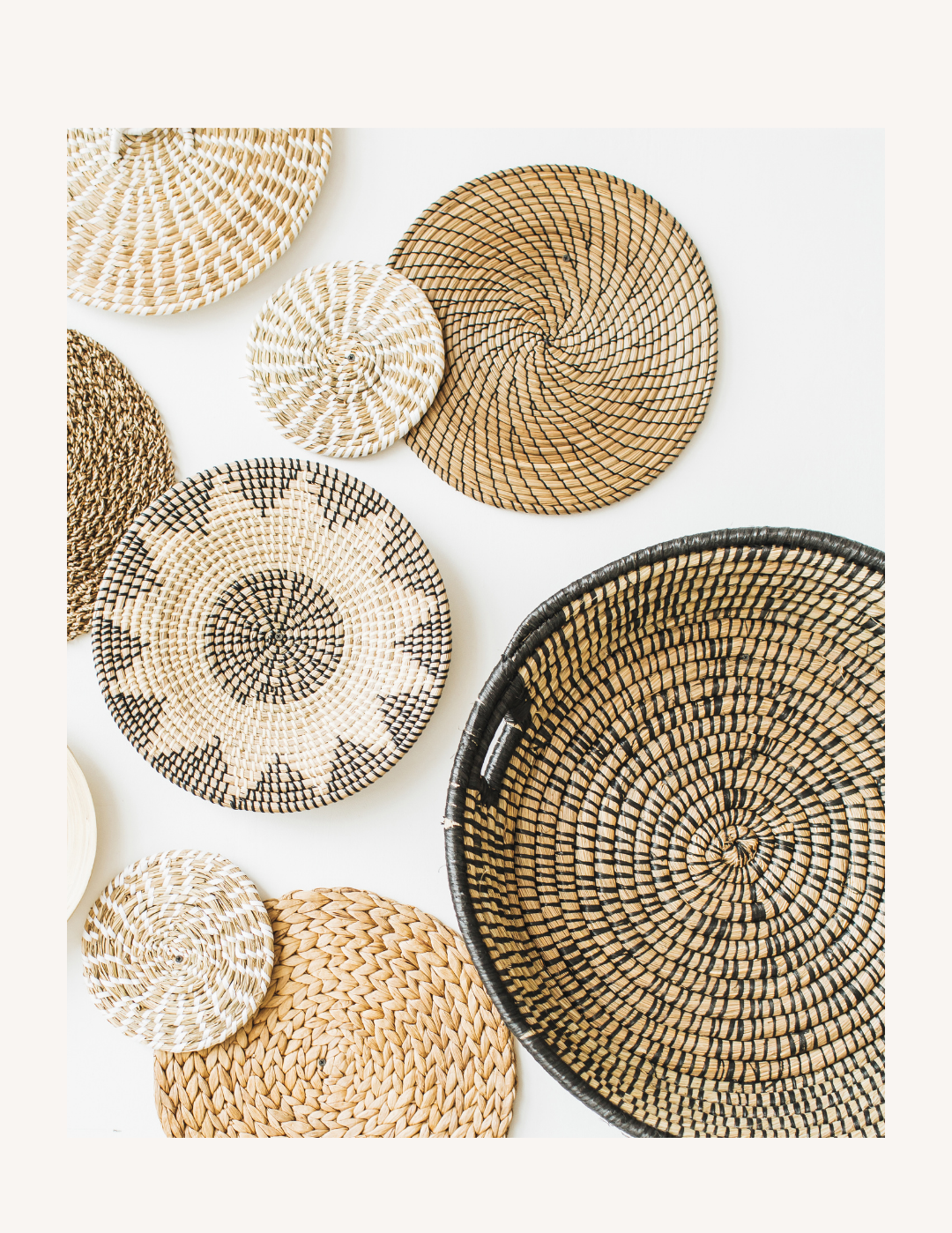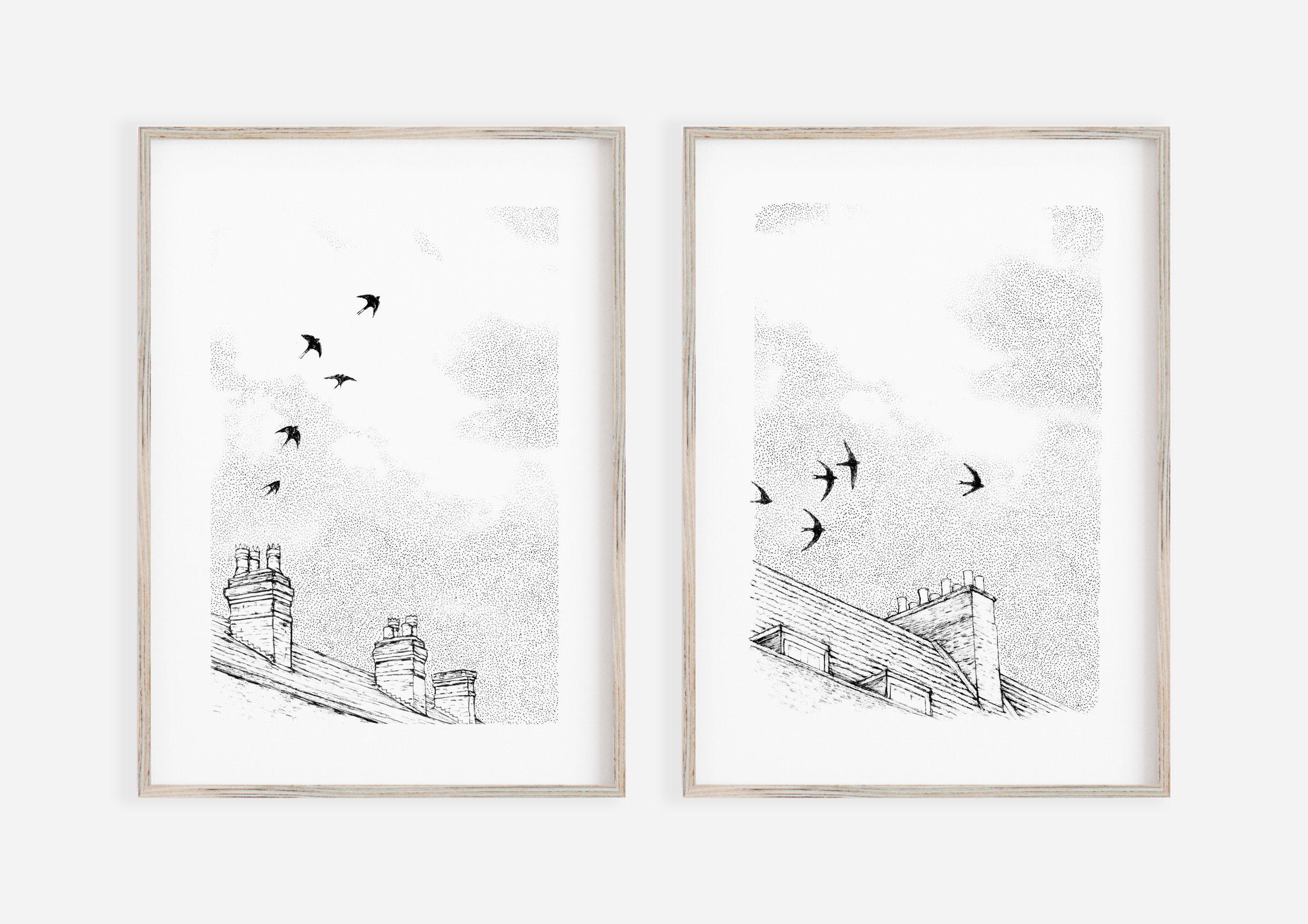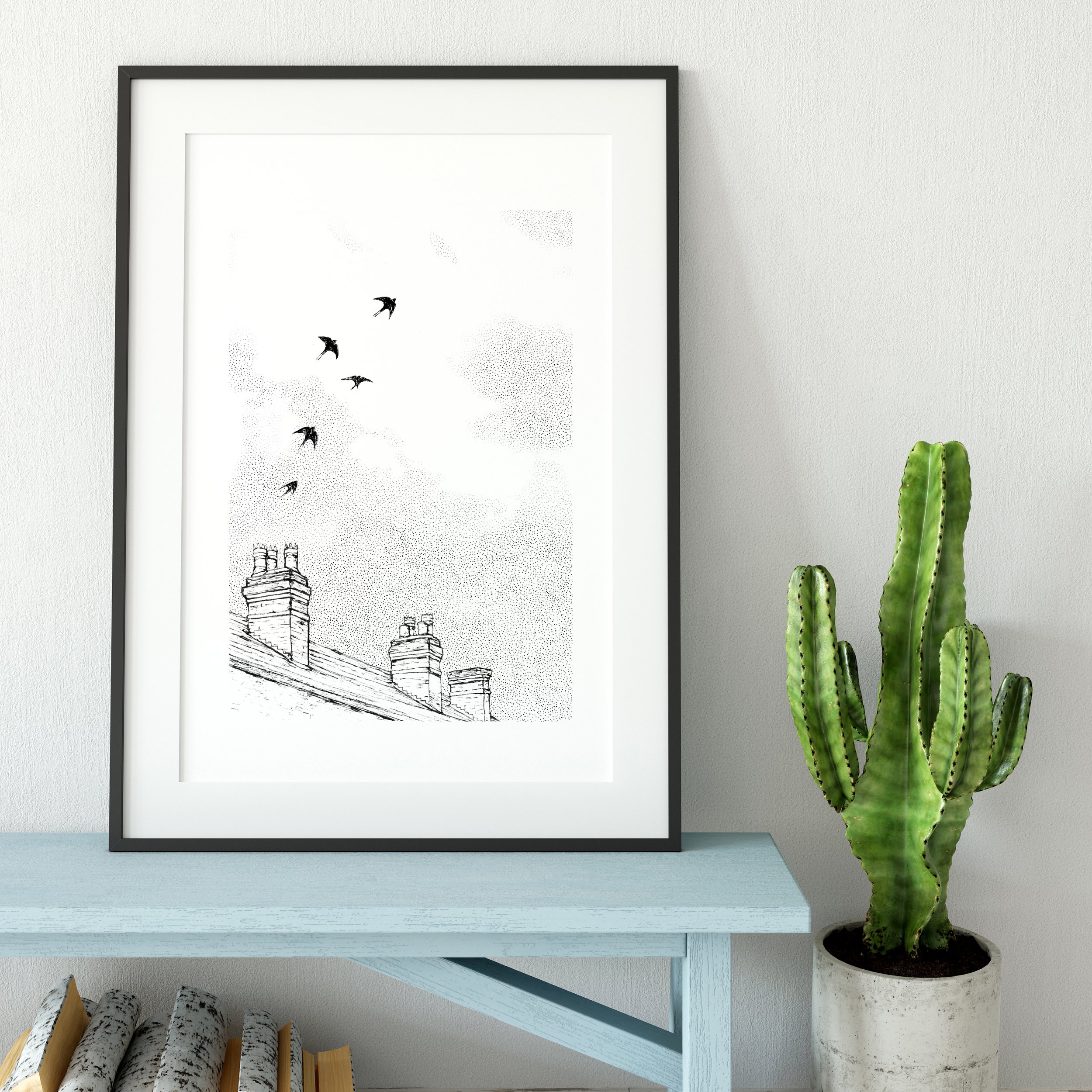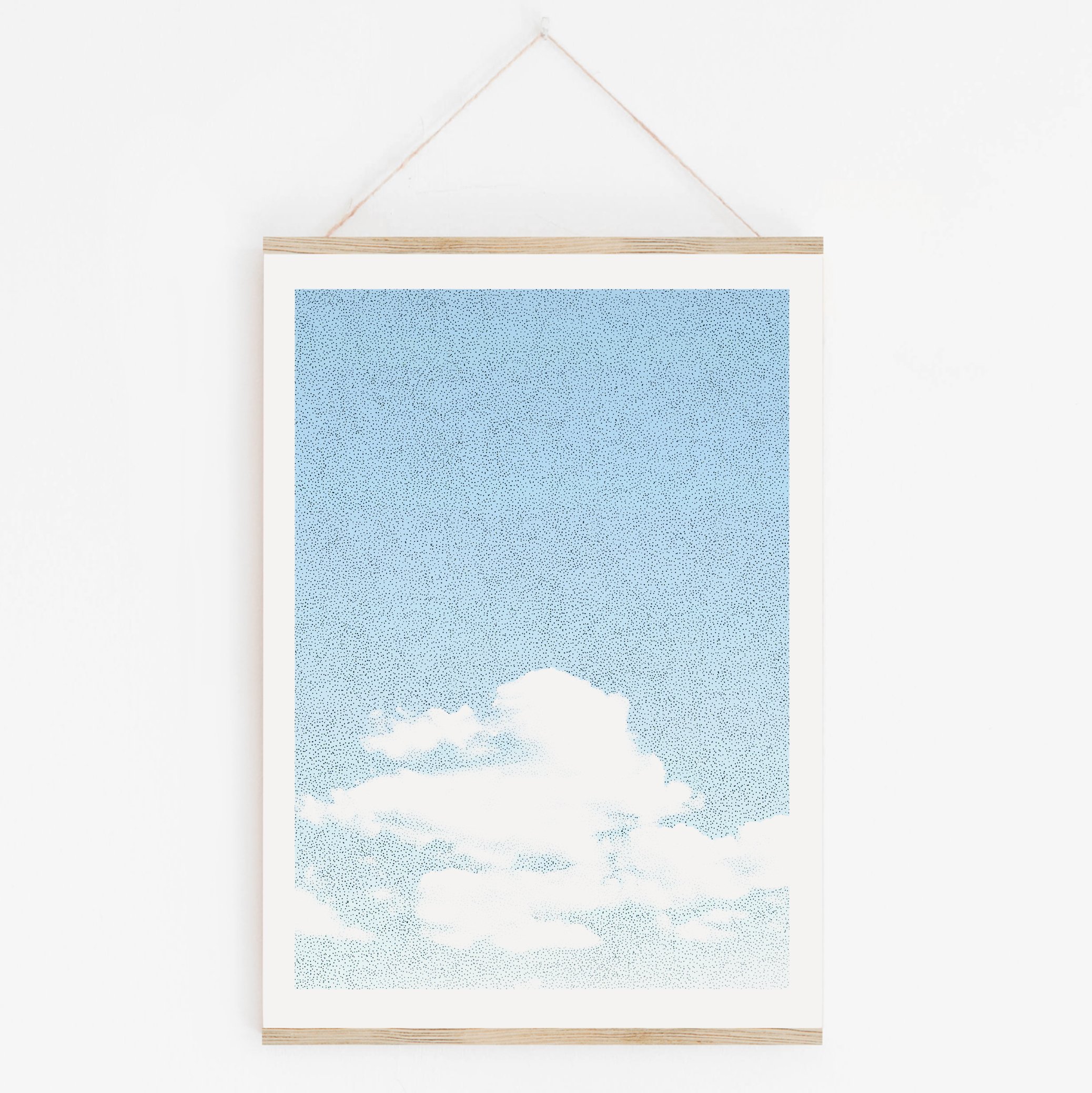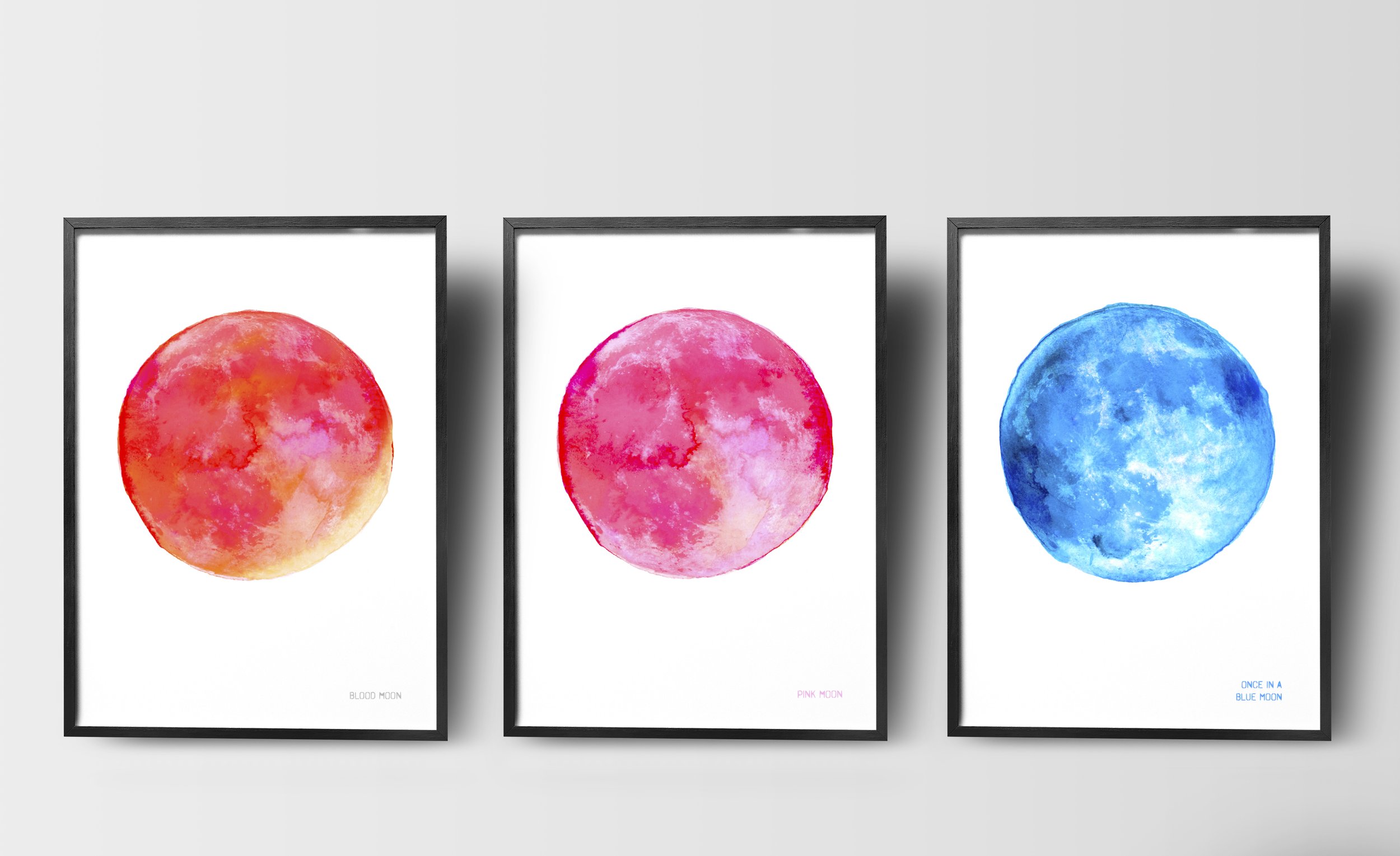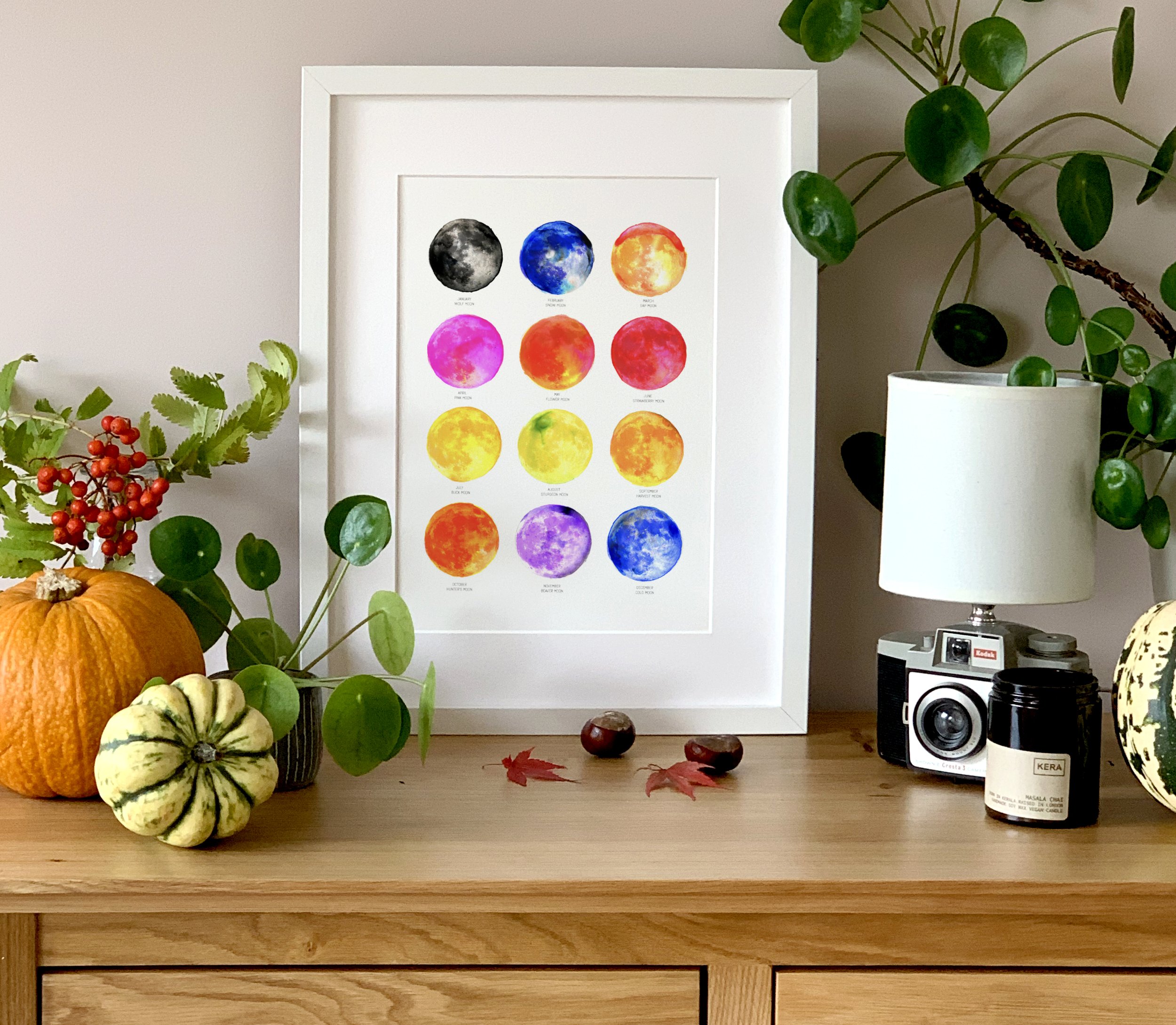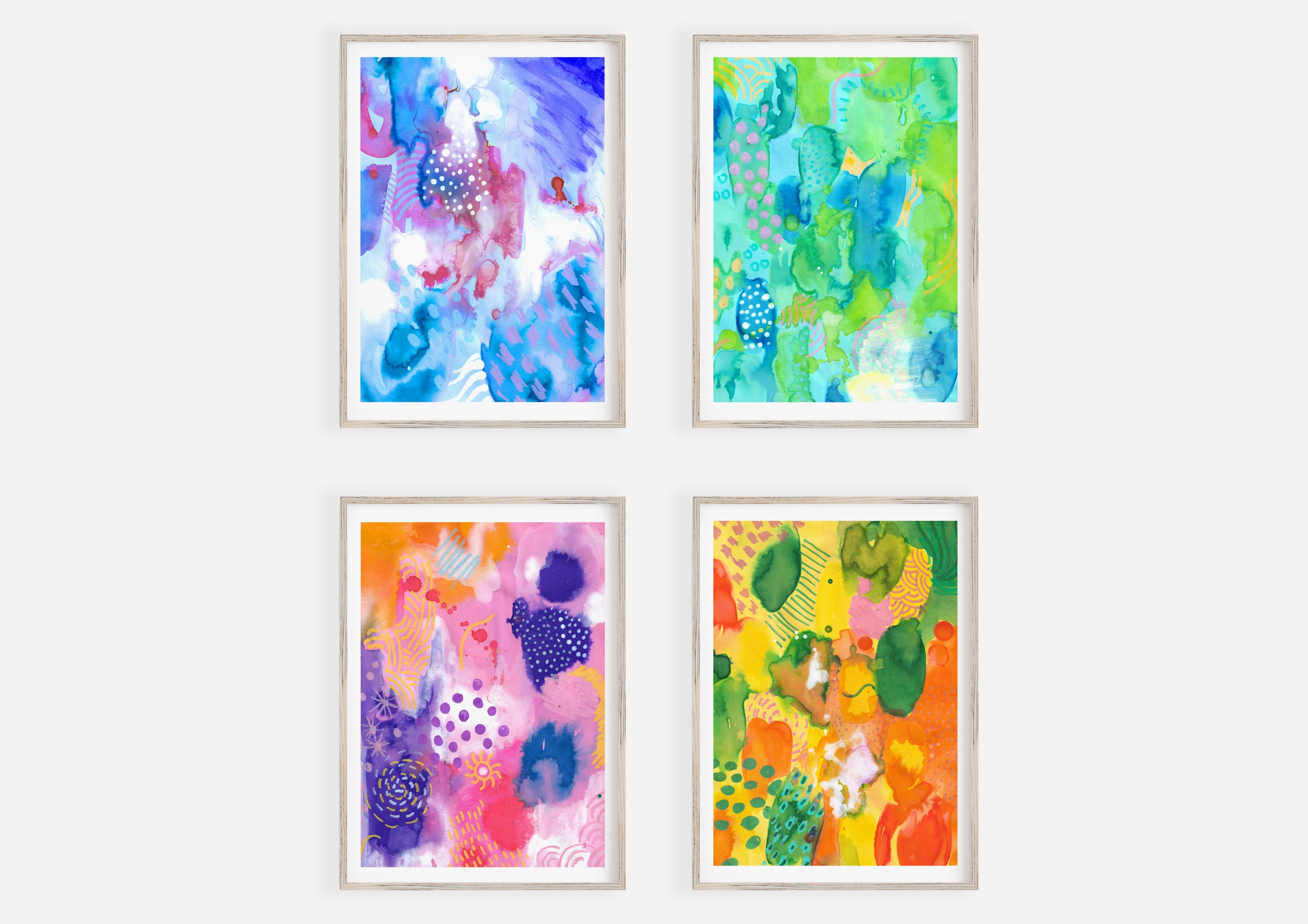10 Tips for Displaying Art in your Home
Read our top 10 tips for displaying art in your home. What should you think about when hanging art? Where should artwork be placed in the home? What is the easiest way to display art? Get inspiration for creative ways to display paintings and wall art in this handy guide…
Think about framing
Carefully choose a frame to fit the artwork and the space where it will hang. If you are on a budget, choose artworks in a standard size, such as A4, A3 or A2, where there are plenty of options for affordable ready-made frames. For more unique pieces consider getting the artwork professionally framed. A beautiful frame and mount, can make an artwork really stand out. Frames that complement and don’t distract from the actual artwork, tends to work best. For a modern and stylish alternative to traditional frames, try a poster hanger. Poster hangers are one of the easiest and quickest ways to display art.
Size matters
It is worth considering scale when it comes to displaying art. A small artwork on a very large wall might get a little bit lost. Similarly, a large painting in a small room can feel overpowering. Think about matching the artwork’s size and scale with the available wall space and surrounding furniture. A common mistake is to leave too big of a gap between furniture and the art. This can leave the artwork looking like it is floating on the wall. Hanging it closer to the nearby furniture will create a more harmonious grounded look.
Make a gallery wall
Consider displaying a collection of artworks together in a gallery wall. You could go with a theme such as architecture, landscapes or a particular colour. Alternatively just choose selection of artwork that you think work together. Be your own art curator! Check out our Pinterest board to get some inspiration of different types of gallery wall displays.
Choose the right colours
Colours can have an effect on how people feel in a space. They can rejuvenate, or calm a room. You could select art in accent colours to complement the general decor of the room, use paintings to bring a splash of colour to the walls, or to create an interesting focal point in the room. If you are unsure about what colours work together, it might be useful to read up a little on colour theory in interior design. Utilise walls by hanging art in colours that enhance the style and feel that you want for the room.
Consider all spaces
Where can artworks be placed in a home? Above the sofa in the living room and above the bed in the bedroom are the most common places to hang paintings, but art can be displayed in any room or space in your home. Unusual spaces can be brought to life with a well chosen piece of art. Remember bathrooms, office spaces, stairwell walls and landings, walls above doors, even utility rooms. Anywhere you want!
Utilise Shelves
Shelves, mantle-pieces and bookcases, are great spaces to create an instant art display, with the added benefit of not damaging the wall. Using shelves or bookcases to display art also makes it very easy to change the artwork, if you decide to re-style the room. Mix art with ceramics, books and unusual objects for a ‘cabinet of curiosities’ style display. There are also special picture ledges shelves that are specially designed to display art and favourite objects.
Even or Odd
Is it best to display a collection of artworks in odd or in even numbers? Well, that depends on the effect you want to achieve. Displaying odd numbers of artworks can feel more interesting to the eye. Odd number displays tend to keep your gaze moving across the composition. The ‘rule of three’ is a well known in interior design trick that also work well with wall art. On the other hand, a matched pair of artworks that complement each other in composition or colour, can feel calming to the eye, as we have a tendency to naturally pair similar visual objects in our mind. Two stacked portrait artworks, might fill a vertical wall space nicely. An even number of artworks of the same size, for example 12 A4 prints, will work well together, especially when displayed in an even grid pattern.
Art is Personal
What art should you choose for your home? There is no right or wrong answers when it comes to choosing art for you walls. The key is figuring out what style works best for you and the look you’re trying to achieve in your home. Art taste is very personal, make sure to display artworks in themes, subjects, or colours that you like. It could be film posters, illustrations of local landmarks, original paintings or limited edition prints. Etsy is a great marketplace to find work by emerging artists. Display art that you love!
Display unusual objects
Plates, hats or baskets, are just a few ideas of pieces that you could hang on your walls to personalise your home. Hunt for unique objects at charity or antique shops. Mix unusual objects with paintings and prints to create an eclectic one-of-a-kind wall display.
Start simple
To make a start with displaying art in your home, try keeping it simple. Choose one statement art piece for each room to begin with. Consider larger pieces and let the artwork either be the rejuvenating focal point to the room, or a calm harmonious complement to the decor. You can always add more pieces as you go along and slowly build your art collection over time.
For more art display inspiration, check out our Pinterest Board here.


